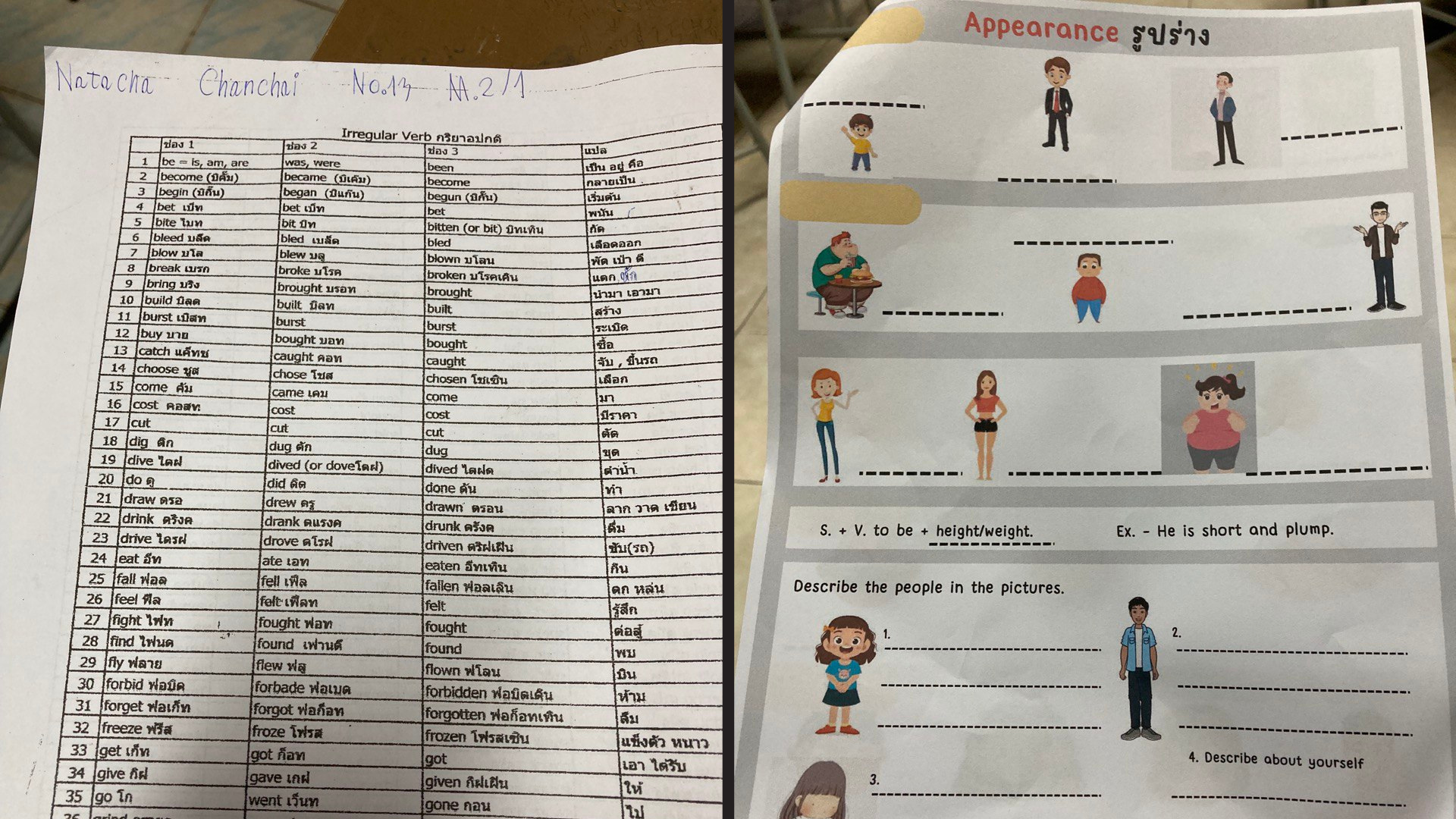Everything’s in Thai: Pedagogy in the Classroom
Even though I was put under Teacher Aom’s care and guidance, I had the opportunity to learn from several teachers during my stay in Ban Mhaekeng. Apart from my mentor, I also had Teacher Jin and Teacher Ying to be thankful for, as they showed me the ins and outs of the classroom.
The Teaching Trinity: Methods, Materials, and Technology
Being
the nervous wreck that I am, I was admittedly anxious about what to expect from
Thai classrooms. So, right around the first weeks of observation, I was excited
to see what classroom tricks and innovative learning methods my teachers had in
store.
Then
again, what did I really expect to see in the classroom? Thailand wasn’t that
different from the Philippines; heck, we already look alike! Just about every
classroom used digital slideshows and printed worksheets. Don’t get me wrong—there’s
nothing wrong about these learning methods and materials in the classroom;
heck, I use them myself during my demonstration teaching back home.
What
I can say is very different in Thailand, however, is its approach to teaching
foreign language. Compared to the Philippines, it's entirely teacher-centered,
from the presentation of the lesson up until the last assessment; classrooms
revolved around the teacher. Oh, did I forget to mention that the instruction
in foreign language classes was entirely in Thai?
So, every classroom, regardless of which level, has around the same three things: a flat-screen television, a microphone, and a speaker set. Let me tell you, teachers used them a lot. I’ve never seen a teacher not use one. Of course, there was the trusted whiteboard (for all your writing needs™).
Speaking
of traditional, Thai classrooms were also quite big on textbooks. Most of the
lessons taught for the day were in some way derived from these texts. I had
asked Teacher Jin and Teacher Aom about it, and they told me that lessons and
assessments were from the textbook, but finer details of the topic were often
sourced online.
Other visual aids were often found plastered throughout the classroom, you really can't miss 'em even if you tried.
Assessments: The Good, The Bad, The Authentic
Felt
like I needed to separate this one from the others. Teachers in Ban Mhaekeng
were really into paper-based worksheets – I suppose they are much easier to
store and grade. The 8th Grade department that I was assigned to had a shared
worksheet for the week to disseminate to students. Teacher Aom was the one that
designed them, and she even offered me that if I wasn’t sure what to give to
students, I could use one of hers.
When
the teachers didn’t use worksheets, they used group-based work or individual
exercises to assess student learning. Teacher Jin was quite skilled in this
one, so much so that she’d sometimes do it twice in a period! I remember one
time, she had arranged the students to form a circle, after which she gave a
student a card and played music. The student was then instructed to pass around
the card to the next student beside them for as long as the music was playing.
The last one to touch the card before the music stops gets to answer Teacher
Jin’s question about the lesson.








Comments
Post a Comment